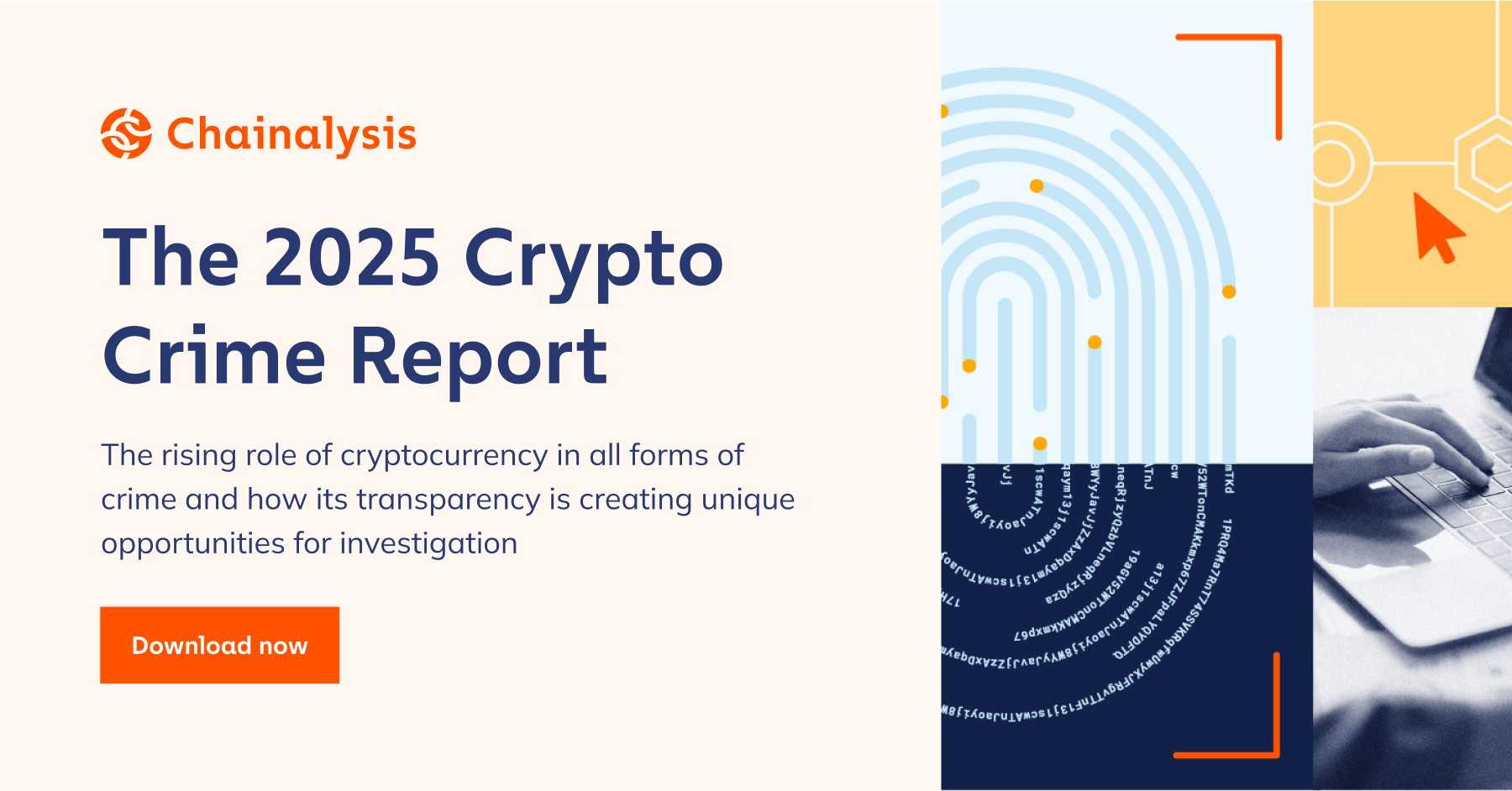Cryptocurrency is exciting. It promises huge gains, exciting projects and a new way of investing. But wherever there's money, scammers follow.
The scale of this problem is staggering: Americans lost $5.6 billion to cryptocurrency-related frauds and scams in 2023, representing a 45% increase from 2022, according to the FBI's 2023 Cryptocurrency Fraud Report. Even more alarming, Chainalysis data shows crypto scam revenue reached at least $9.9 billion globally in 2024, potentially hitting a record $12.4 billion once all data becomes available.
Investment scams account for approximately 71% of all cryptocurrency-related losses, making them the most dangerous threat to crypto investors today.
If you are a noob to crypto, entering this world can be overwhelming. A single bad click or momentary lapse in judgment could mean real money.
But most crypto scams fit into predictable categories. Once you know what to watch for, it becomes so much easier to avoid getting taken advantage of.
We’ll decode the top crypto scams, such as fake giveaways and rug pulls, in simple language.
And best of all, we’ll give you some practical tips to avoid them and your digital assets safe.
2024-2025
The shocking scale of cryptocurrency fraud
Top 5 Crypto Scams in 2025
Rug Pulls
Developers vanish with funds
Fake Giveaways
Social media "send to receive" scams
Phishing
Stealing private keys & seed phrases
Pump & Dump
Artificial price manipulation
Impersonation
Fake support & influencers
What Are the Most Common Cryptocurrency Scams in 2025?
The five predominant cryptocurrency scams in 2025 include rug pulls, fraudulent giveaways, phishing schemes, pump and dump operations, and impersonation scams. According to FBI data, these scams cost Americans $5.6 billion in 2023, with investment scams accounting for 71% of all cryptocurrency-related losses. Rug pulls and pig butchering scams saw the highest growth rates in 2024.
The Top 5 Crypto Scams:
- Rug Pulls - Developers disappear after collecting funds
- Fake Giveaways - Social media scams promising returns
- Phishing Scams - Fraudulent sites stealing private keys
- Pump and Dump - Artificial price manipulation
- Impersonation Scams - Fake support or influencers
Most Common Cryptocurrency Scams (With Real Data)
1. Rug Pulls
How about a rug pull, one of the most infuriating crypto scams around? It usually begins with a new project like a token or an NFT collection that suddenly has a lot of hype.
Rug pulls have become increasingly sophisticated, with scammers now using AI-generated content to create more convincing fake projects. According to Chainalysis researchers, "Crypto fraud and scams have continued to increase in sophistication, particularly with the rise of AI-generated content."

The website is slick, the promises sound awesome (“We are building the next big thing!, And early investors begin to throw their money at it. Some even create marketing videos for it.
But as soon as the latter have accumulated enough money, the creators disappear. The website vanishes, and so do its social media accounts, and your money? Gone.
A major red flag for me is when a project is doing a lot more marketing and hype than showing what they’re building. If you aren’t able to come across solid information about the group, product or the purpose of the project, that is a strong signal to withdraw.
Tips to avoid rug pulls:
- Take your time to research. Google the people behind the project. Are they real? What is their background in crypto or technology? If something seems too fast or too good to be true, it likely is.
- Beware of projects that document fast returns.
- Look for an external audit of the smart contract. Here is another process for detecting trouble before it materializes.
How can I tell if a crypto project is legitimate?
A legitimate crypto project has verifiable team members with real LinkedIn profiles, a clear roadmap with technical details, third-party smart contract audits, and realistic promises about returns. Avoid projects that focus more on marketing than development, promise guaranteed profits, or pressure you to invest quickly. Always research the team background and look for external validation from reputable crypto news sources.
2. Fake Giveaways
Fake giveaways are rampant, particularly on social media. You may also run into a post or video about a celebrity or a well-known cryptocurrency company giving away free crypto.
Federal Trade Commission data reveals that 43% of investment scam victims were initially contacted via social media, making these platforms prime hunting grounds for fraudsters.
Here's what it typically looks like: “Send 0.1 ETH and I’ll send you 1 ETH right away!” That sounds too good to be true, and 100 percent of the time, it is. Let me be clear: this is 100% a scam.
These fraudsters really make this all appear legitimate. They’ll copy logos, adopt similar usernames and even make up fake comment threads chock-full of people saying it worked for them. But once you drop your crypto in, it’s gone. There's no "double return."
The key trick here is urgency. The posts suggests that the offer isn’t going to be there for long, so you’re tempted to act quickly without necessarily taking time to consider your options.
Tips to avoid fake giveaways:
- Never send crypto to get crypto. Actual giveaways don’t work like that.
- Avoid suspicious accounts, even if they appear verified or have a celebrity name. Scammers are very good at impersonation.
- Check out the individual or company’s official site or social media. If you can’t verify the legitimacy of the giveaway from a large and trustworthy source, then skip it.
Are crypto giveaways on social media real?
Legitimate crypto giveaways on social media are extremely rare and never require you to send cryptocurrency first. Real giveaways are typically announced on official company websites, don't ask for private keys or seed phrases, and don't pressure you to act immediately. The FTC reports that 100% of "send crypto to get crypto" offers are scams, regardless of how legitimate they appear.
3. Phishing Scams
Phishing scams dupe you into revealing sensitive information like your seed phrase, private key, login information. Scammers frequently solicit through messages or emails.
They impersonate a crypto wallet or exchange and claim there’s a problem with your account. They will contain a link to a legitimate-looking fake site. Once you put your information in there, they will rob you blind every way they can.
These scams also appear as pop-ups or fake support agents on Telegram or Discord. Some even design fake apps or browser extensions. These tactics exploit urgency to make you act without proper consideration.
Tips to avoid phishing scams:
- Do not share your seed phrase or private key. A real platform will never request it.
- Bookmark known sites and always go there directly — do not trust links sent to you.
- If you have a significant amount of crypto, employ a hardware wallet. It holds your private keys offline, and away from, the danger posed by online threats.
4. Pump and Dump Schemes
Pump-and-dump frauds are some of the oldest market manipulation cons. Sadly, they have also crossed into the world of crypto.
Pig butchering scams, a sophisticated form of pump and dump, saw dramatic growth in 2024. Chainalysis reports that losses from these relationship-based scams increased nearly 40% in 2024 compared to the previous year.
Here’s how it goes down: A band of merry men pump a cheap, unknown coin, typically on platforms like Telegram, Discord, or Twitter. They urge everyone to “buy now” before the price takes off.
As more buyers pile in, the price goes up. But when it peaks, the original promoters sell the rest of their holdings, and everyone else is left holding a lot of worthless or near-worthless tokens.
These scams feed on FOMO. Everything sounds urgent, and the hyperbole is meant to make you feel like you’re missing out on the next Bitcoin. In fact, it’s simply a scam to drive the price of a cheap stock higher so the fraudulent investors can cash out.
Here’s how to prevent pump and dump schemes:
- Ignore hype-driven buying. Be wary of people who are yelling “to the moon” without telling you why.
- Avoid FOMO. “You don’t need to race out and buy something because it’s being hyped up right now.
- Look for substance. A real project is supposed to have an aim, a roadmap and a real development, not just noise.
- The spikes can go up nearly as quickly as they come down. Big, sudden jumps without new, actual news or updates are often a bad sign.
5. Impersonation Scams
Impersonation unfortunately relies on a weak ligament of trust. In this grift, there’s always a person posing as a respected figure: the support rep from a crypto service, a well-known influencer or even a good pal from your online crypto community.
They could message you to tell you that they’re willing to help you or share an "investment opportunity," or tell you that they’re in trouble and they urgently need some cryptocurrency. But on the other side of the fake profile is a scammer who’s trying to get to your wallet or, worse, what’s inside your pants.
These scammers are masters in mimicking the real. They copy profile pictures, adopt the same usernames with slight revisions, and they commonly use urgent language to get you to act fast.
How to prevent impersonation scams:
- Stay skeptical of DMs from strangers. No support team will ever message you first, let alone requesting wallet access.
- Re-check from other sources. If someone purports to be a friend or influencer, reach out to them in another way to verify.
- Be careful even if the profile seems legitimate. Scammers are also highly skilled at copying names, bios and even Comment patterns. Always double-check.
Your visual guide to identifying crypto fraud in 2025
🎪 Rug Pulls
Developers create hype around a new project, collect investments, then disappear with all the funds. The project website vanishes overnight along with your money.
Red Flags
- Anonymous team with no verifiable background
- Promises of unrealistic returns
- More marketing hype than actual development
- No smart contract audit
Protection Tips
- Research team members thoroughly
- Look for third-party smart contract audits
- Avoid projects with only marketing focus
- Check for realistic roadmap and timeline
🎁 Fake Giveaways
Scammers impersonate celebrities or companies on social media, promising to double your crypto if you send them some first. 100% of "send crypto to get crypto" offers are scams.
Red Flags
- "Send 0.1 ETH, get 1 ETH back" promises
- Urgent time-limited offers
- Fake verification badges and comments
- Direct messages from "celebrities"
Protection Tips
- Never send crypto to receive crypto
- Verify giveaways on official websites
- Check account creation dates and followers
- Real giveaways don't require payments
🎣 Phishing Scams
Fraudulent websites and emails that look legitimate, designed to steal your private keys, seed phrases, or login credentials. Once they have this info, your crypto is gone forever.
Red Flags
- Urgent emails about account problems
- Slightly misspelled website URLs
- Requests for seed phrases or private keys
- Pop-ups claiming wallet issues
Protection Tips
- Bookmark legitimate sites and use them directly
- Never share seed phrases or private keys
- Use hardware wallets for large amounts
- Enable two-factor authentication everywhere
📈 Pump & Dump
Groups artificially inflate the price of a low-value coin through coordinated buying and hype, then sell their holdings at peak, leaving others with worthless tokens.
Red Flags
- Coordinated "buy now" messages in groups
- Promises of "going to the moon"
- Sudden price spikes without real news
- FOMO-inducing urgent language
Protection Tips
- Ignore hype-driven investment advice
- Research projects beyond price movements
- Look for real utility and development
- Be wary of coordinated group promotions
🎭 Impersonation
Scammers pose as trusted figures like support representatives, influencers, or friends to gain your trust and access to your wallet or personal information.
Red Flags
- Unsolicited DMs offering help
- Support agents asking for wallet access
- Friends suddenly asking for crypto loans
- Influencers with suspicious new accounts
Protection Tips
- Verify identities through other channels
- No real support team contacts you first
- Check profile creation dates and history
- Be skeptical of urgent help offers
Final Tips to Safety in Crypto
Crypto can also be less than everything it’s believed to be. Bear in mind also that it is chock-full of traps, particularly for beginners. Crypto can sometimes be like wandering through a minefield.
Just as you would never run a mission-critical application without having backup generator set, you should not leap into crypto without a solid foundation.
There are some smart habits you can also maintain that go a long way toward protecting your funds. The more that you know, the easier it is to pinpoint a trap and not let the trap catch you.
Source : FBI Cryptocurrency Investment Fraud
Here are a few sound tactics for keeping yourself safe as you venture into crypto:
1. Double Check
Double-check everything. Scammers succeed when something is almost real. That includes hoax websites, misspelled website addresses, imposter token and company names, and copycat social media accounts.
It’s always worth a quick second to confirm links, usernames, and project details before clicking or pledging to anything. If something doesn’t seem quite right, listen to your instincts; it likely isn’t.
2. Two-Factor Authentication Is Nonnegotiable
Turn on two-factor authentication (2FA). This one is a must. 2FA is supported on most of the big exchanges and wallet apps, so switching it on will give your accounts an additional layer of protection.
A better way to confirm it’s really you is with an authenticator app like Google Authenticator or Authy (which is better than SMS, as text messages are easier to hijack).
3. Modest Beginnings, Slow is Better
Begin in increments, and let your education evolve incrementally. It’s easy to get caught up in hype or to feel like you don’t want to “miss out.” But in crypto, slow and steady is smarter.
Don’t jump in with a lot of money before you’ve learned the ropes. Consider investing up front to be like tuition. You can make mistakes, so take ONLY what you can afford to lose.
4. Stay Updated
Stay updated. Crypto changes fast. Scams shift their contours, platforms add features, new rules appear.
Keep yourself informed by tuning into reliable news sources, crypto communities, and YouTubers or Twitter accounts that have a reputation for transparency.
If you're active in Telegram or Discord groups, make sure they're moderated and free of spam or scammy promotions.
5. Protect Recovery Phrase
Protect your recovery phrase like your life depends on it. In crypto, it kind of does. Never type it into a form, never store it in your email or Google Drive, and definitely never share it with anyone, even if they say they're from "support."
6. Don't Be Emotional
Don't let emotions make the decisions. FOMO and panic can be your worst enemies.
Scammers love to create urgency, whether it's a fake giveaway "about to expire" or a coin "about to blow up." Take your time, do your homework, and never rush.
What Should I Do If I Think I've Been Crypto Scammed?
If you believe you've been crypto scammed, immediately stop all communication with the scammer, document all transactions and communications, report to the FBI's IC3 website, contact your bank or exchange, and file complaints with the FTC and local law enforcement. While cryptocurrency transactions are typically irreversible, quick action may help prevent further losses and aid in investigations.
Immediate Steps:
- Stop Communication - Cut contact with scammers
- Document Everything - Save all evidence
- Report to Authorities - FBI IC3, FTC, local police
- Contact Your Bank - Alert financial institutions
- Seek Professional Help - Consider legal consultation
Crypto Safety Alert
Cyber criminals are increasingly using cryptocurrency to commit financial crimes. These sophisticated schemes can affect anyone.
6 Essential Safety Tips
Verify links, usernames, and project details before clicking
Use authenticator apps like Google Authenticator or Authy
Invest only what you can afford to lose
Follow reliable news sources and communities
Never share or store online - treat like your life depends on it
Avoid FOMO and panic decisions - take time to research
Security Checklist
- Two-factor authentication enabled
- Recovery phrase stored securely offline
- Using reputable exchanges only
- Regular security updates installed
- Avoiding public Wi-Fi for transactions
- Double-checking all addresses before sending
Common Scam Types
Misspelled URLs and copycat sites
Fake company names and projects
Copycat accounts and fake support
"Limited time" offers creating urgency
If You've Been Scammed
Time is critical in crypto scam situations
Smart Investment Philosophy
Slow & Steady Wins
"In crypto, slow and steady is smarter"
Learn before you earn
Only invest what you can lose
Consider your first investments as tuition - you're paying to learn!
Bottom Line
Crypto is still a bit like the Wild West—there's a ton of opportunity but also plenty of risk, especially when it comes to scams. For every legit project out there, someone is trying to take advantage of beginners who are still figuring things out.
You don't need to be a tech expert to stay safe. Knowing what to watch out for, such as rug pulls, fake giveaways, or shady DMs, is a big step in the right direction.
So take your time, trust your gut, and never feel pressured to click, buy, or send money without doing your homework. In crypto, a little caution goes a long way.
FAQs
I'm new to crypto. Is it even safe to get started?
Yes, it can be safe as long as you take some precautions. Start small, stick to well-known platforms, and never share your wallet's recovery phrase or private keys. Crypto has real opportunities but also comes with real risks if you're not careful. The key is to learn the basics and stay cautious.
How do I know if a crypto project is legit or a scam?
Look beyond the hype. Check who's behind the project. Can you find real names and LinkedIn profiles? Does the project have a clear purpose or product? Are there smart contract audits? If it's all marketing and promises of "huge returns," it's a red flag.
Someone messaged me on Twitter saying I won free crypto. What should I do?
Don't fall for it! It's almost certainly a scam. Real giveaways don't ask you to send crypto first, and legit companies won't randomly DM you out of the blue. Always double-check with the official account or website before trusting any message like that.
How much money do people lose to crypto scams?
Americans lost $5.6 billion to cryptocurrency scams in 2023, while global losses reached at least $9.9 billion in 2024 according to Chainalysis. The average individual loss varies by scam type, with investment scams causing the highest dollar amounts. Older adults face particularly high median losses, though the 50-59 age group lost the most total money at $346 million in the first three quarters of 2024.
Author Bio

Andre Oentoro is the founder of Breadnbeyond, an award-winning animation video company. He helps businesses increase conversion rates, close more sales, and get positive ROI from explainer videos (in that order).

